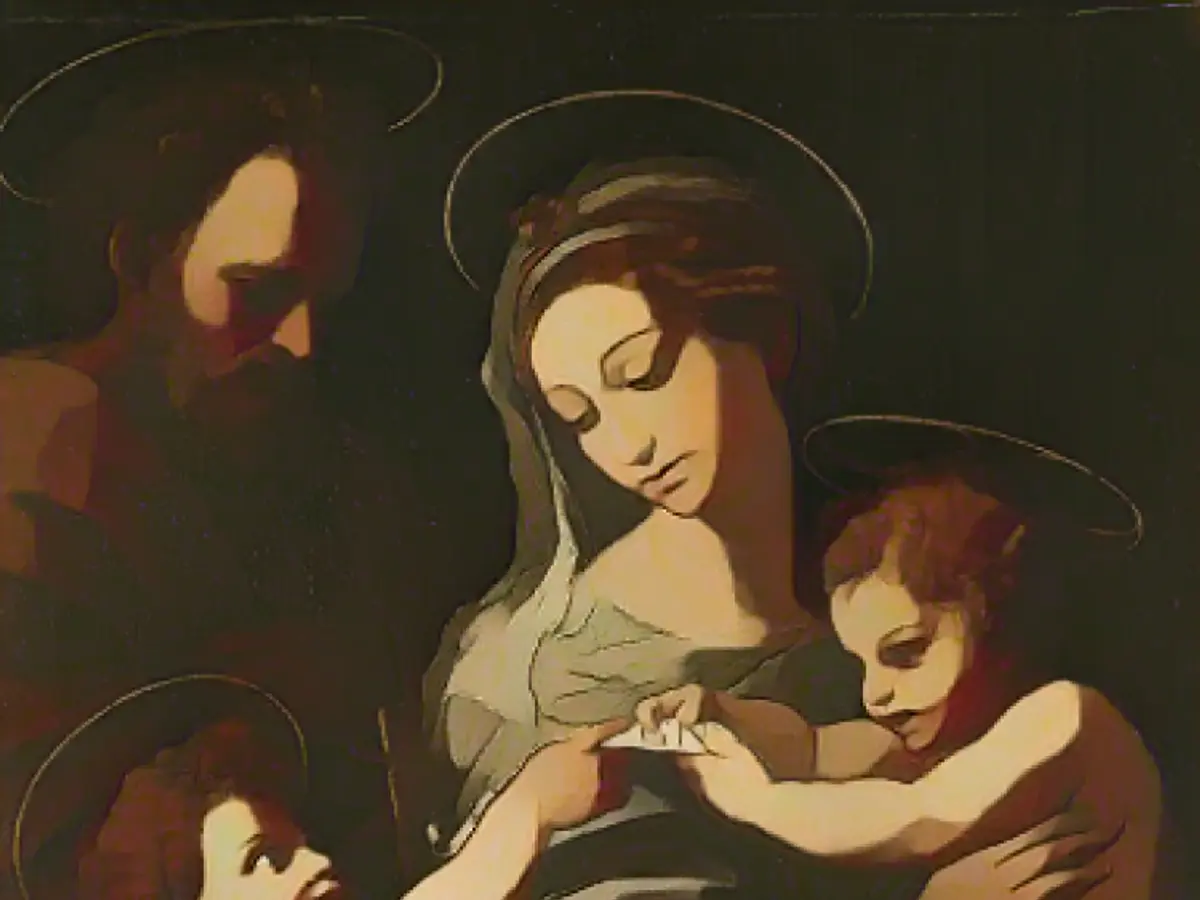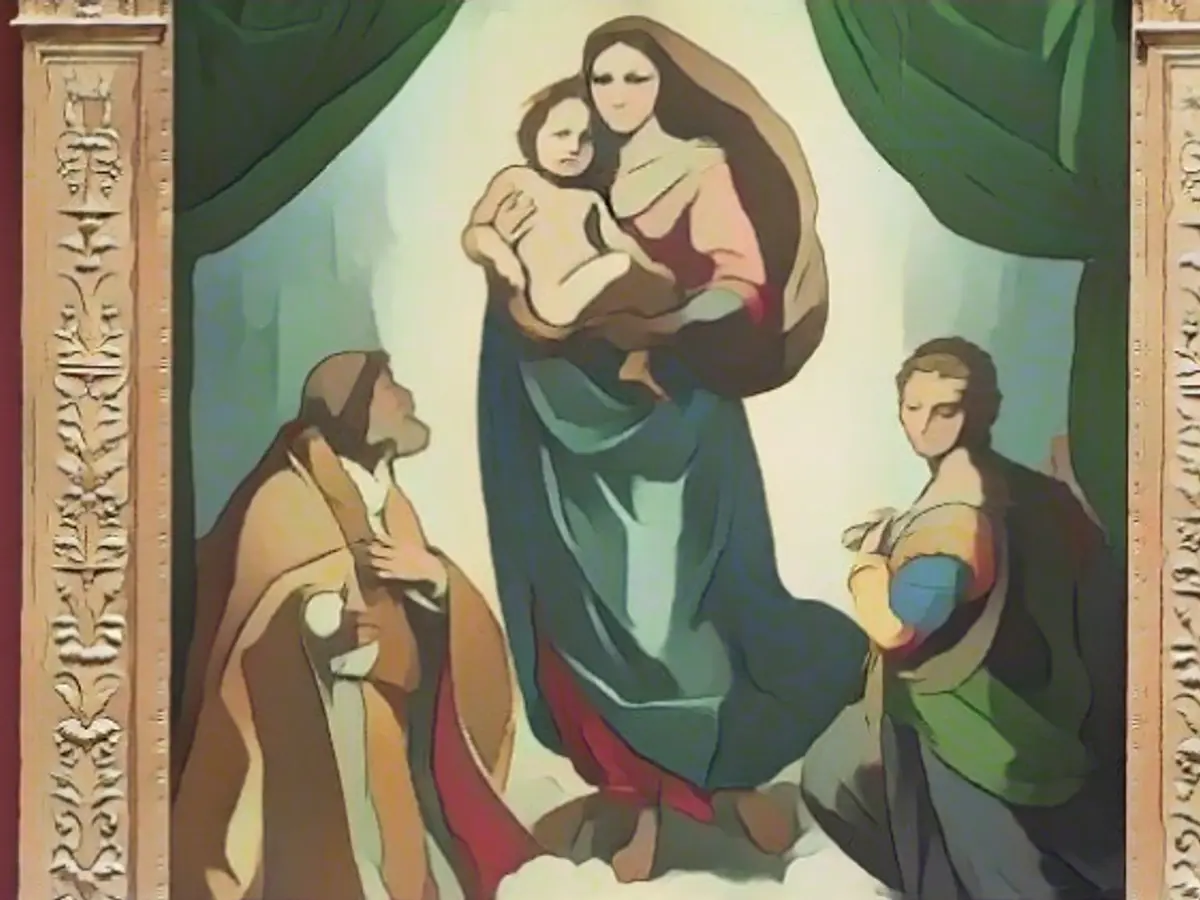AI recognizes Raphael painting 98 percent reliably
The authorship of old paintings in particular is often unclear, despite extensive research. Now an English research team is presenting an AI that could help. It is almost 100 percent reliable and classifies a previously controversial work quite clearly.
Artificial intelligence can recognize paintings by the painter Raphael quite reliably based on visual criteria alone. In special tests, the AI system specially trained on the Renaissance painter's "handwriting" proved to be 98 percent reliable, as researchers led by Hassan Ugail from the University of Bradford in England report in the journal "Heritage Science". The study confirms existing doubts about the authenticity of the painting "Madonna della Rosa" (Madonna with the Rose) - but only partially.

The authorship of paintings is often questionable. They do not necessarily have to be forgeries, because in earlier centuries in particular, some painters had workshops in which they were assisted by assistants. Various techniques are used to clarify the authenticity of a painting: These include written documents, age dating, material examinations using chemical and technical methods such as X-ray and spectral analysis and also visual examinations, for example of style, color transitions or brushwork.
Important painter of the High Renaissance
The team led by computer specialist Ugail focused exclusively on these visual aspects in its AI - and on Raphael. Raphael - actually Raffaello Sanzio da Urbino (1483 to 1520) - is one of the most important painters of the High Renaissance alongside Michelangelo and Leonardo da Vinci. The researchers trained their system with 49 paintings that are clearly by Raphael and the same number of paintings in which the artist was demonstrably not involved, but which certainly show similarities.
In most cases, the AI's judgment was very clear: For example, it assigned the "Sistine Madonna" to Raphael with a probability of 93 percent, similarly the Marriage of Mary. In contrast, it ruled out a painting by the English painter Peter Lely with 100 percent probability. In the case of a specially made copy of a Raphael self-portrait, the software ruled out the painter's authorship by 68 percent.
Authorship disputed
The analysis of the painting "Madonna della Rosa", which shows the Holy Family with St. John the Baptist and hangs in the Prado Museum in Madrid, proved to be particularly interesting. Its authorship has been disputed for decades - experts are discussing the involvement of the painter and architect Giulio Romano, who was still working in Raphael's workshop at the time.
The AI analysis revealed a probability of only 57 percent that Raphael painted the entire picture. However, examinations of certain areas of the painting revealed that he probably painted the faces of the Madonna and the two children depicted himself - each with a probability of between 79 and 93 percent. The face of Joseph in the background of the scene, on the other hand, is 63 percent unlikely to have been painted by Raphael. This means that collaborators of the painter could have worked on less prominent elements of the painting, which was not unusual at the time.
"The method we have presented shows encouraging accuracy," write the scientists. The procedure is also suitable for examining paintings by other painters - under one condition: the AI must be trained on a sufficient number of verified paintings by these artists.
Read also:
- This will change in December
- Attacks on ships in the Red Sea: shipping companies avoid important trade route
- Houthi rebels want to launch further attacks despite international coalition
- USA forms military coalition against Houthi attacks on ships in the Red Sea
Artificial intelligence has shown promise in the field of art history, as demonstrated by the 98% reliability in identifying Raphael's works. This revolutionary technology could potentially revolutionize art analysis, providing insights into the authorship of controversial pieces like "Madonna della Rosa." Moreover, the potential of AI in art extends beyond recognition, as it can also analyze stylistic nuances and color transitions, further contributing to art appreciation and understanding.
Source: www.ntv.de







